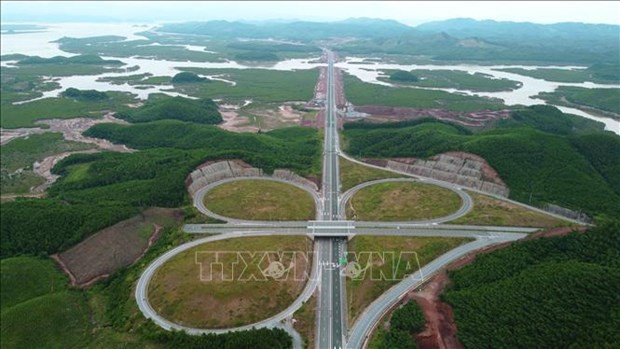
This is part of the national master plan for 2021-2030, with a vision towards 2050, which has just been approved by the Government and will be submitted to the National Assembly for approval.
The country's GDP growth is expected to reach 7% per year in the 2021-2030 period and 6.5-7.5% annually in the 2031-2050 phase.
The GDP per capita is projected to increase to 7,500 USD by 2030 and 27,000-32,000 USD by 2050.
By 2030, the service sector will contribute 50% of the GDP while industry-construction and agriculture, forestry, and fishing sector account for 40% and 10%, respectively.
There will be northern and southern locomotive zones, with Hanoi and Ho Chi Minh City as the growth poles, along with the North-South, Lao Cai-Hanoi-Hai Phong-Quang Ninh, and Moc Bai-HCM City-Vung Tau economic corridors. The urbanisation rate will exceed 50%.
The plan targets national digital transformation, digital government, digital economy and a digital society, with the digital economy to account for around 30% of GDP.
Vietnam will have a population of around 105 million and its human development index (HDI) will be maintained at 0.7 and the country expects to be among the top 10 countries with the best education services in Asia.
The country is also striving to catch up with other countries in the region with advanced medical services, with an average 35 hospital beds and 19 doctors for every 10,000 people.
By 2050, Vietnam is aiming to become a developed country with upper income status, an equal, democratic and civilised society, and harmonious, modern infrastructure. It is working hard to move towards the circular, green and low-carbon economy.
To achieve these goals, the Government has chalked out key tasks.
The country needs to form a basic framework of national infrastructure, focusing on transport infrastructure, energy, urban areas, digital infrastructure, environmental protection, irrigation, disaster prevention, adaptation to climate change and cultural and social infrastructure.

It should accelerate the restructuring of the economy and development spaces, ensuring productivity, quality and efficiency improvement; and prioritise the development of a number of industries and fields that have the potential and advantages, so that they can serve as a driving force for growth and enhance the national economy's self-reliance.
It is necessary for the country to develop locomotive zones and important growth poles, and select a number of regions and urban areas with special advantages to build economic and financial centres, and special administrative-economic units with special mechanisms and policies to improve international competitiveness.
The country will also form and develop economic corridors connecting seaports, airports, international border gates, major trading hubs, urban centers and economic centres./. VNA